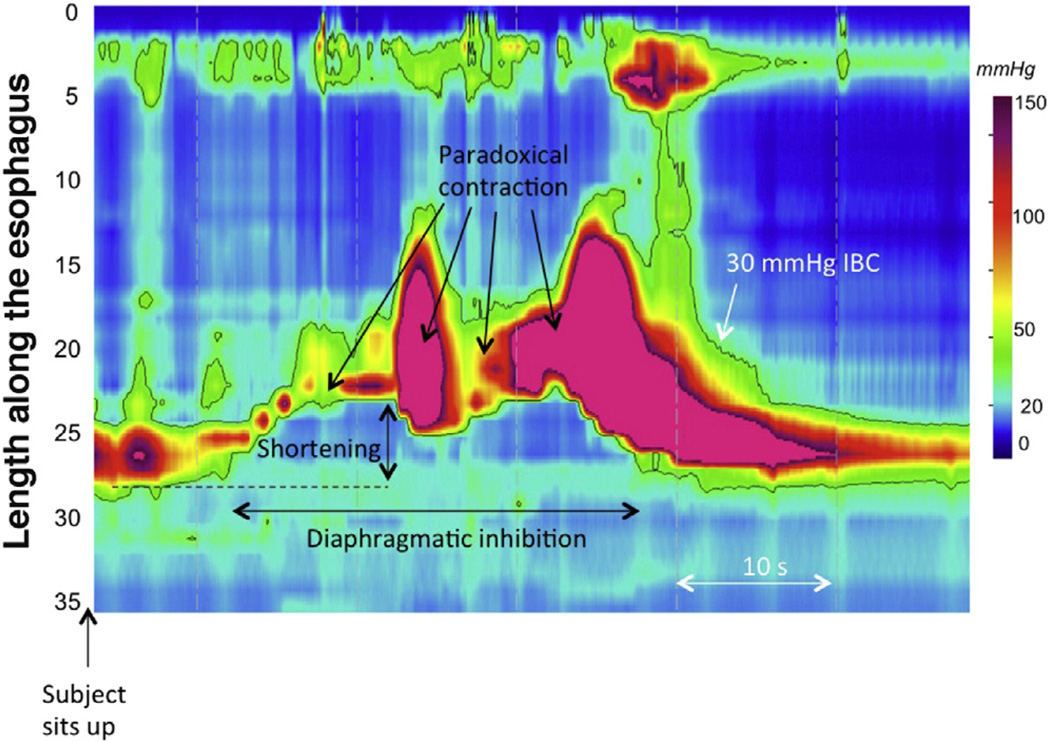Figure 4.
Incomplete TLESR in a patient with type III achalasia. Similar to patients without achalasia, patients with achalasia frequently exhibit TLESR in the course of a manometry protocol after performing a series of swallows in the supine position and then sitting up. In the case of achalasia, the resultant motor response, shown in this figure, contains all elements of a TLESR (prolonged esophageal shortening with concomitant inhibition of the crural diaphragm and strong after-contraction) except LES relaxation. In fact, the LES paradoxically contracts, consistent with the hypothesis that type III achalasia is a consequence of immune-mediated dysregulation of postganglionic inhibitory nerve function, often with an accentuation of excitatory postganglionic nerve function.

